To read more by topic or date, see our Newsletter Archives page.
March 11, 2023
“It is the first mild day of March: each minute sweeter than before.
The redbreast sings from the tall larch that stands beside our door.
There is a blessing in the air, which seems a sense of joy to yield
To the bare trees, and mountains bare, and grass in the green field...
We from to-day, my Friend, will date the opening of the year.
Love, now an universal birth, from heart to heart is stealing,
From earth to man, from man to earth: —it is the hour of feeling.”
-William Wordsworth, 1770–1850, English poet, “To My Sister,” 1798
It’s Still Winter Here, but We’re Getting Ready for April Shipping
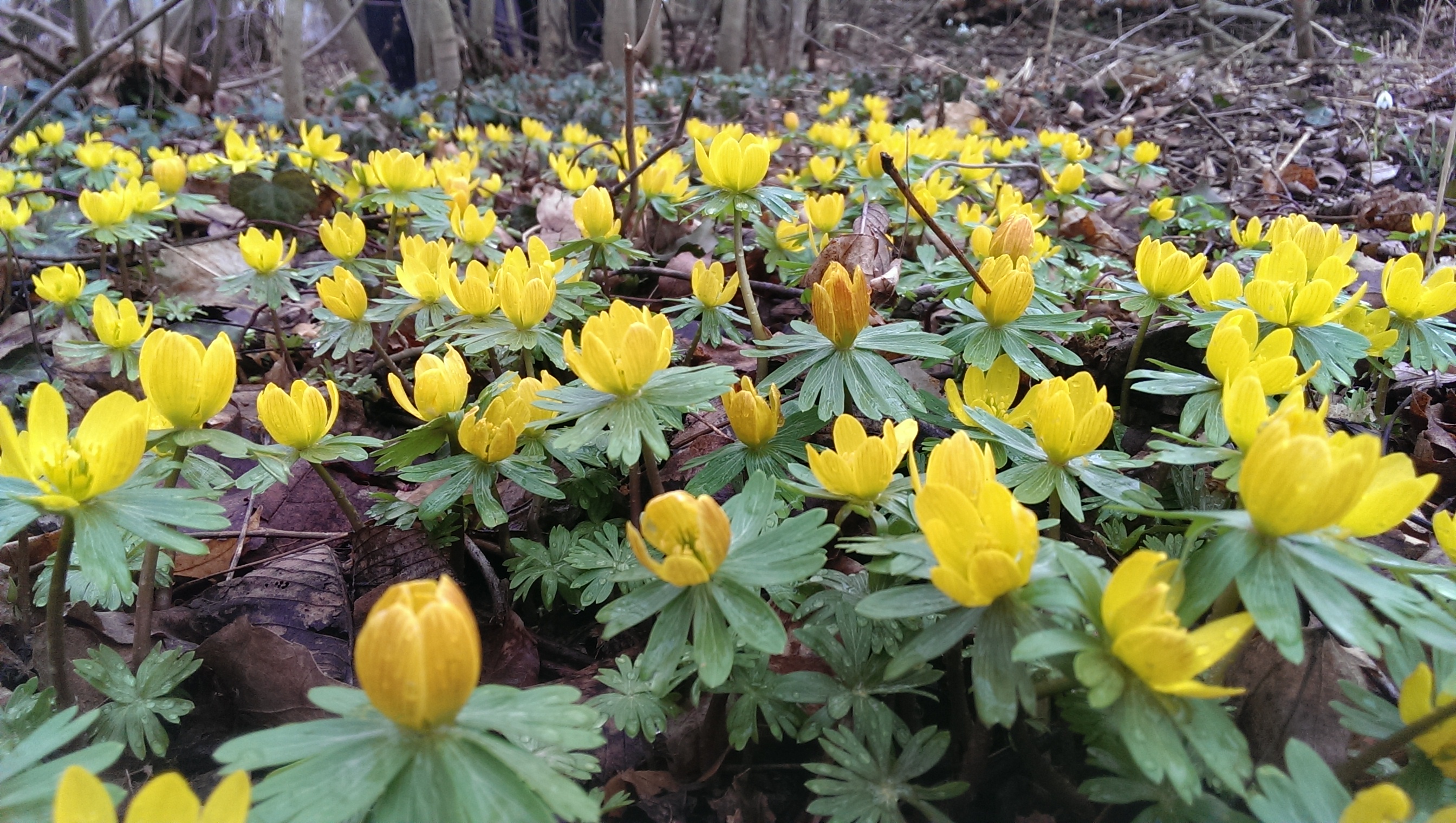
|
Between an ice storm two weeks ago and last Friday’s winter storm, we in Michigan have been through a number of days without power, but we’re digging out and continuing to prepare for shipping spring orders in early April. (We’ve learned from long experience that shipping before the end of March is just too risky for our cold-tender bulbs. Thanks for your patience!) Snowdrops and Eranthis are bravely blooming whenever the snow melts from around them, and other bulbs are starting to peep out of the earth. We hope that whether your spring has already arrived or, like us, it’s still some weeks off, that you’re warm and well!
Forgot to order? We still have great varieties for spring planting available!
We Want to Talk About Some of Our Favorite Dahlias!
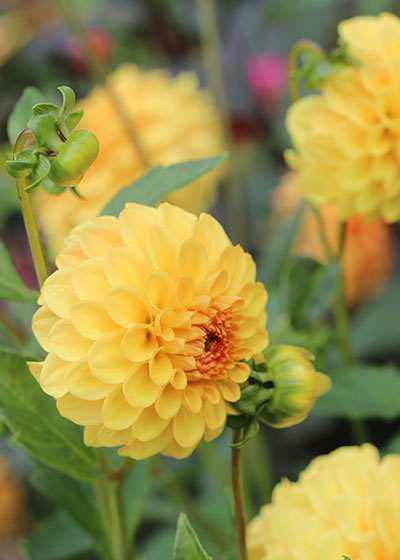
|
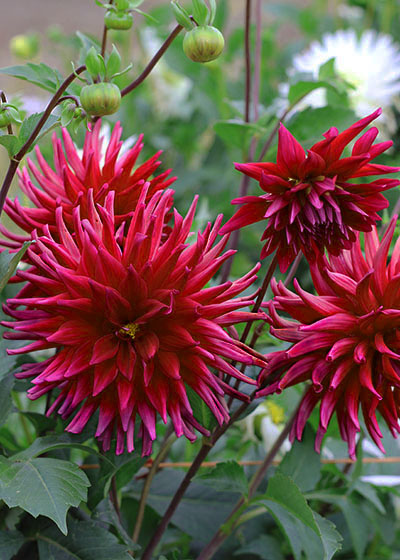
|

|
| ‘Golden Scepter’ dahlia | ‘Juanita’ dahlia | ‘Kelvin Floodlight’ dahlia |
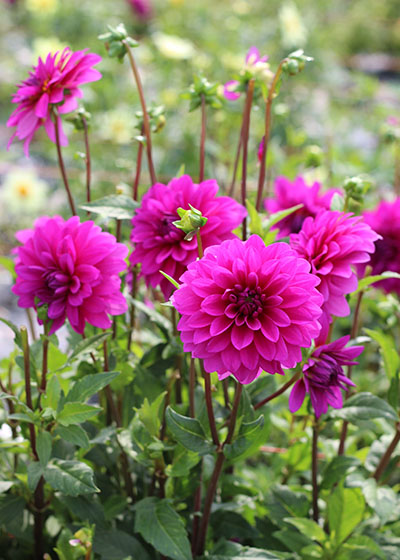
|
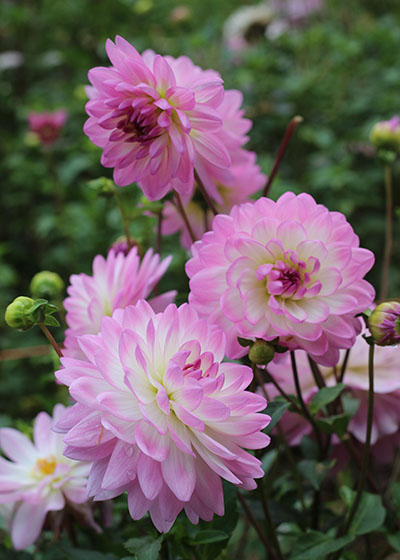
|
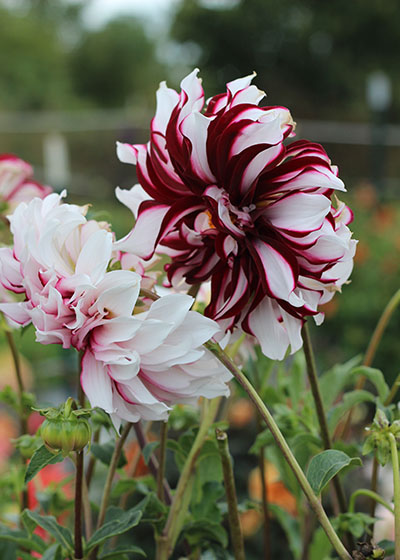
|
| ‘Requiem’ dahlia | ‘Nepos’ dahlia | ‘Tartan’ dahlia |
Dahlias can be glorious landscape plants, providing bursts of colors in the late summer and early fall when much of the garden is slowing down, while some varieties are especially popular for bouquets to enjoy indoors. As we get ready for spring here we’ve been talking about which dahlias we can’t wait to see bloom again or want to try for the first time and thought we’d share them with you in case you’re new to dahlias - or looking for something different- and would like our suggestions. There’s such variation in color, form, and size that there’s bound to be something to suit your particular tastes.
Vanessa, OHG’s owner and head researcher of old varieties, says “I'm always a big fan of varieties where no two flowers are the same. You can cut 10 flowers from ‘Tartan’ and the burgundy and white combination can vary considerably through the bunch. This can also be true for ‘Nita’, although usually less so. There are sometimes so many petals on a ‘Nita’ flower it can look like a ball of petals! I recommend ‘Golden Scepter’ because it groups well with all varieties and is one of our most floriferous varieties.”
Justin, who is our technical wizard and website-designer, all while studying to graduate nursing school this spring (!), mentioned three different favorites: ‘Little Beeswings’, ‘Juanita’, and ‘Kelvin Floodlight’. He reports that “‘Little Beeswings’ paired wonderfully next to my up-and-coming rose patch with its similar colors and size of blooms. ‘Juanita’ was the first dahlia I ever grew. The shades of maroon and crimson are very elegant and look great in my kitchen, so it's a keeper!” His third pick is ‘Kelvin Floodlight’ which “was just shockingly large and bright the first time I held one in my hand. I remember staring at it and studying the intricate arrangement of florets for far too long. Inspecting the stems you'll see the plant is built to handle them too” and concludes “My love and appreciation for flowers stems from their attractive look and the vital role they play in keeping us all alive.”
Meanwhile Rita, our office manager and one-who-keeps-everything-on-track, is a champion for ‘Amber Queen’, for once it “starts to bloom you'll have non-stop flowers until the frost. The blossom size is perfect for a small vase on a nightstand. The color blends with almost every flower. It’s lovely in summer bouquets but really grows into a star during the fall. I love to arrange it in small pumpkins and share as a gift with friends.” ‘Requiem’, Rita says, is “a statement flower for sure – bold, bright and beautiful. She loves that "the color is so highly saturated, and it’s gorgeous with ‘Plum Tart’ gladiolus. The stems are long and strong, making it great for cutting – ‘Requiem’ is part of my kitchen table bouquet all summer long.” Her last choice is the bold ‘Thomas Edison’, enthusing “I've worked here for 18 years and ‘Thomas Edison’ is one that I recommend highly! It is a reliable and strong plant with sturdy stems and flowers that hold up for a long time in the vase. The color is striking and it is just as nice in the garden as it is in bouquets. It blooms so abundantly throughout the season that you will have enough to share!”
Amelia, who comes in for shipping season to check orders and keep them flowing to the barn for packing, wanted to draw your attention to ‘Andries’ Orange’, which “is a glorious star-burst of radiant orange that catches my eye from across the yard! It’s got great stems for cutting and I love how the spiny petals contrast with the smooth ones of other varieties.” She says she’s “thrilled to see ‘Nepos’ available this year – I think it’s such a beautiful combination of white, pink and lavender! I love it in a vase or out in the garden and grow it every chance I get.” Amelia has kept bees for years and “wouldn’t be without ‘Bonne Esperance’ because it starts blooming early, keeps going reliably through frost and has simple open flowers that make it a bee favorite.”
Still can’t decide? You can’t go wrong with either of our ‘Endless Bouquets’ and ‘Dreamy Dahlias’ samplers - they combine some of our most popular varieties and let you save some money at the same time.
New Crocus for Your Consideration!
Crocus are the classic and much-loved symbol of spring, blooming early and offering such beautiful colors to our winter-weary eyes! For Fall 2023 we’re excited to be adding some delightful varieties to our offerings and wanted to bring them to your attention now so you could consider them as you survey your spring garden.
‘Weldenii Fairy’ crocus – This magical variety of C. biflorus, or Scotch crocus, has outer petals of light violet and silvery-white centers with a lilac blush. These diminutive sprites bloom early and naturalize well where happy.
‘Prins Claus’ crocus – Like other snow crocus, this eye-catching prince of the C. chrysanthus lineage is an early bloomer, distinguished by its regal deep, dark purple petals that alternate with white ones to enliven your spring garden.
‘Hubert Edelsten’ crocus – This rare form of C. sieberi was developed nearly a century ago by Mr. Edelsten, a neighbor of British garden-writer E.A. Bowles who described the man as “almost as mad about crocuses as I am” and his variety as “very beautiful.” The three outer petals are bright purple with a dramatic white band matching the white of the inner petals. Bright orange stamens add to the glory!
Garden Tips for Late Winter and Earliest Spring
Although it may be too late for you lucky souls who garden where spring is already well advanced, here are some tips for those of you in colder zones:
1. Crocus, snowdrops, and other bulbs start to emerge earlier than many gardeners realize, especially in warm spots where the snow melts first. Matted leaves and winter mulch can distort their growth, so get out there EARLY and gently loosen or remove it.
2. Rabbits and other animals love to eat crocus, so you may want to spray leaves and buds with a repellant the moment they emerge. Check to see if you have some on hand before you need it, because the animals won’t wait! Tulips and lilies are two other, later-emerging animal delicacies that you may also want to spray.
3. Very early spring is also one of the best times to scratch a little fertilizer into the soil above your bulbs. If you wait too long, particles tend to get lodged between the leaves at their bases where they can burn the tender new foliage. Early spring is also when bulbs need the fertilizer to fuel their rapid growth and bloom. Don’t overdo it, though, and remember it’s always good to be guided by a soil test.
4. Now is also a good time to wash any pots that you’re planning to use for starting dahlias or growing tuberoses, etc. Finish by sterilizing them for a few minutes in a mix of 10% bleach and water. Later when you’re scrambling to keep up with your burgeoning garden, you’ll be glad you did.
Share Our Gazette with a Friend
Please help us “Save the Bulbs!” by forwarding our newsletter to a kindred spirit, garden, museum, or group.
To Reprint Any Part of Our Gazette . . .
Simply credit www.oldhousegardens.com.














